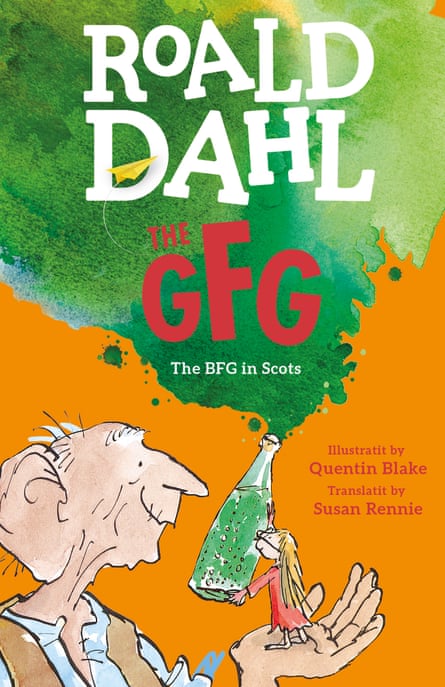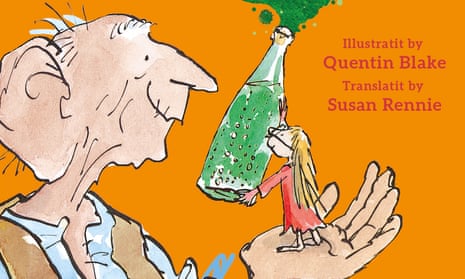He eats “foosty feechcumbers” rather than snozzcumbers and drinks fuzzleglog rather than frobscottle, but he is still just as big and friendly as ever: meet the Scottish version of one of Roald Dahl’s best-loved characters, who has made his appearance as part of the celebrations of the late author’s centenary.
Dahl’s Big Friendly Giant becomes, in Scots, the Guid Freendly Giant; the book’s title, The BFG, thus becomes The GFG. Publisher Black and White Publishing, which is releasing the new translation this week, said it was intended to celebrate the centenary of Dahl’s birth on 13 September, and predicted the book would be hugely popular, particularly with Steven Spielberg’s film adaptation of the children’s novel also out this summer.
The story, which has been translated by Dr Susan Rennie from Glasgow University, opens, says the publisher, “ae nicht, as the ither bairns sleep”, and “Sophie is wheeched fae her bed in the orphanage by the muckle haund o a giant”.

“Lucky for her, it belangs tae the Guid Freendly Giant,” explains the publicher. “The GFG disna eat wee lassies. He jist eats foosty feechcumbers and drinks fuzzleglog. But there are ither giants that are no sae freendly and that snashter up slaversome human beans for their tea.”
Rather than keep Dahl’s original names for his more bloodthirsty giants, Rennie has renamed the likes of the Fleshlumpeater, Bonecruncher, Manhugger and Childchewer as the Girslegorbler, Banecrumper, Mucklecleeker and Bairnchawer.
“In order to make that language, Dahl has based it on English words, pulled them apart and recombined them. These are words invented for children to enjoy reading. They can relate them to English words or onomatopoeic sounds,” Rennie told the National in Scotland. “If I hadn’t translated them, they would still have looked like English words.”
In Rennie’s version, the “witching hour” becomes the “witching oor”, and Sophie, now Sophy, “couldna sleep” after seeing “something awfu lang and awfu black an awfu thin” on the street outside.
“It wisna a human. It couldna be. It was fower times as lang as the langest human. It wis that lang its heid wis abune the upstairs windaes o the hooses. Sophy opened her mooth tae skelloch, but nae soond cam oot. Her thrapple, like her hail body, wis frozen wi fricht,” runs Rennie’s translation. She is a lecturer in English and Scots language at Glasgow and author of several books in Scots for children, as well as the first Scots translation of Tintin, The Derk Isle.
She told the National that there was “no reason why The GFG can’t stand on its own to somebody coming to it for the first time”. “I have loved this project, I am delighted with how it has come out,” she said.
Dahl’s novels have been translated into 58 languages, from Afrikaans to Vietnamese. A number already appear in Scots, with The Twits translated as The Eejits, the couple now “honkin, maukit, bowfin and clarty”, George’s Marvellous Medicine becoming Geordie’s Mingin Medicine, and Fantastic Mr Fox The Sleekit Mr Tod.

Comments (…)
Sign in or create your Guardian account to join the discussion